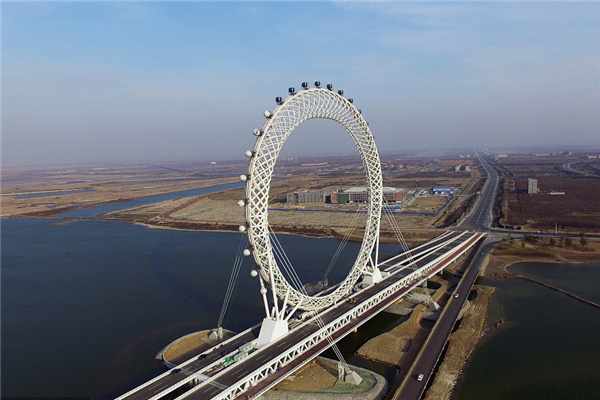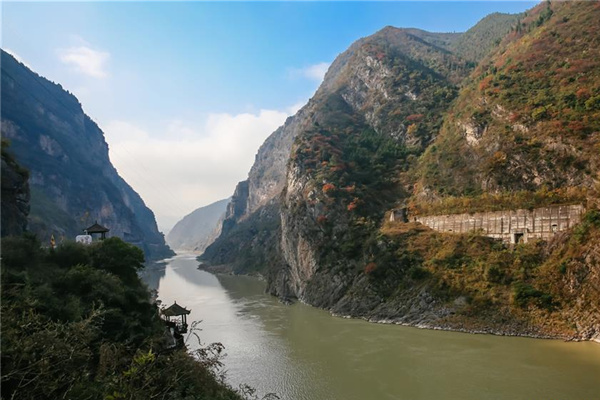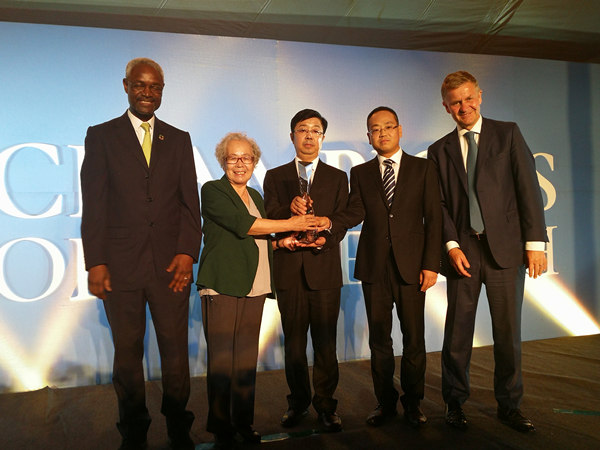

|
Asia's largest wind power facility in Urumqi, capital of West China's Xinjiang Uygur autonomous region. |
Speaking with a strong Shandong accent, Zhu Yuguo has a global vision that enables him to grasp significant business opportunities.
Twenty years ago Zhu started business as an equipment manufacturer for the paper making industry. Within two decades, his Changxing Group had become a well-established international exporter.
But three years ago, Zhu decided to shift the company's business into a burgeoning industry, wind power, out of concern that the paper making market will shrink one day.
Consciously or subconsciously, Zhu is among thousands of Chinese entrepreneurs who make a fortune out of the inconvenient truth of global warming.
Some of them may have no idea about how China will be affected by a changing climate, as detailed in China's first "National Assessment Report on Climate Change".
The report predicts that over the next 13 years, the average temperature in China will rise 1.3 to 2.1 C, and the country's annual average rainfall will increase 2 to 3 percent. Such changes will not only pose dangers to China's diverse ecosystems and natural resources and bring more extreme weather events, but also threaten the food supply.
Meanwhile, concerns about energy security, air pollution and greenhouse gas emissions are all adding pressure to China and its huge and increasing energy demands.
Climate change has become an economic challenge, in addition to an environmental one. But it also opens business opportunities, according to Li Junfeng, deputy director of the Energy Research Institute at the National Development and Reform Commission (NDRC).
"The huge pressure China has been under is a strong momentum for the country to switch to a low carbon economy, which means great business potential, such as alternative technologies and fuels, clean coal technologies, nuclear power, and renewable energy," Li says in a recent forum of China's leapfrog development in Beijing.
This is also the reason that Zhu, chairman of Changxing Group, did not hesitate when he made the decision to shift the company's business in 2005.
"The market for paper making machines has almost saturated, the company needs to find its new direction. At first, we were thinking about entering energy sector, but did not have a specific idea. Coal-fired power plants was the first idea. But the industry is so mature that little space is left for newcomers," Zhu tells China Business Weekly.
Inspired by windmills they saw during their trips to European countries, Zhu and his colleagues researched China's wind power industry. Finding that although the government provided favorable policies for the industry, only a few companies were actually doing the business, Zhu made up his mind.
"Entering the wind power industry requires a large amount of initiative investments. Luckily we have accumulated enough capital through selling paper machines over the past two decades. As an equipment manufacturer, the company also nurtured a strong team in research and development, which is also a prerequisite for producing wind turbines," Zhu says.
After three years' research, Changxing Group now has the ability to produce a complete wind power system. In May, the company signed a contract with a wind power generation plant in Tongliao, Inner Mongolia autonomous region, to provide 200 sets of wind turbines.
While companies like Changxing Group are still trying to find their positions in the growing renewable energy industry in China, some well-established companies have extended their business into international market.
Established in 1998, Yingli Green Energy Holding Co Ltd is among the earliest solar energy companies in China.
After a decade, Yingli has become one of the world's leading vertically integrated photovoltaic (PV) product manufacturers, with a total annual production capacity of 200 MW in polysilicon ingots and wafers, PV cells and modules respectively. The company was listed on the New York Stock Exchange in June 2007.
Analysts see the solar power industry as being hampered by an ongoing shortage of the raw silicon needed to make power cells. Yingli Green Energy is one of a handful of Chinese firms that manages to cope with this shortage by recycling sub-standard silicon wafers discarded by the semiconductor industry, according to Zheng Xiaoqiang, deputy general manager of Yingli Green Energy.
Yingli Green Energy now sells PV modules under its own brand name, Yingli Solar, to photovoltaic system integrators and distributors located in various markets around the world, including Germany, Spain, Italy, Korea and the United States.
Wind power and solar energy are the fastest-growing power generation technologies in China. Li Junfeng, from NDRC, expects the rapid growth of the two sectors in the near future.
"China has already surpassed Germany and Japan, and became the world's largest solar cell producer. We now rank the sixth in the world in terms of wind power generating capacity, but I think China will become the world leader within two or three years," Li says.
Although the cost for electrical generation using wind and solar technologies is still much higher than the traditional coal-fired power plants, China's government has provided incentives for enterprises and the cost is expected to fall dramatically with further technology innovation, says Li.
But not every technology for the low carbon economy popular in the world is suitable for China, Li warns. For instance, besides biofuels, which have aroused concerns of threatening food supplies, the carbon capture and sequestration technology also has limited prospects in China.
"Suppose we have to capture and store all the 6 billion tons of newly increased carbon dioxide emissions by 2030, which equals three times of China's natural gas reserves. Where should we store them?" Li says.
(China Daily 06/23/2008 page4)













